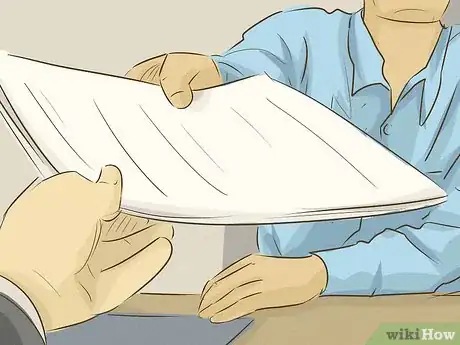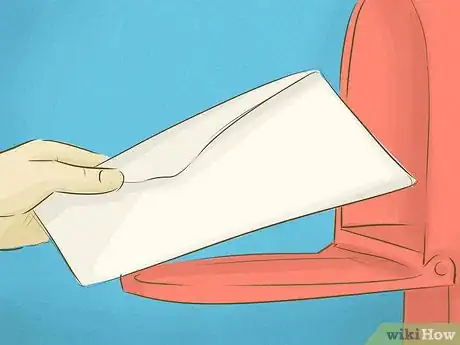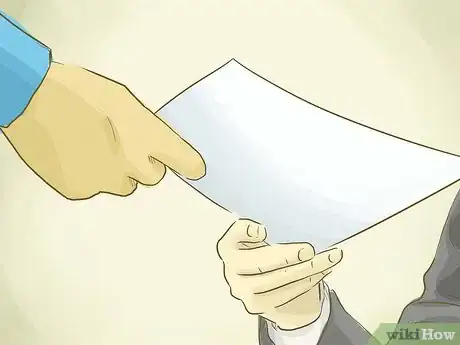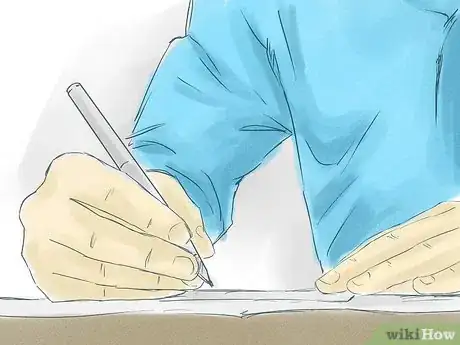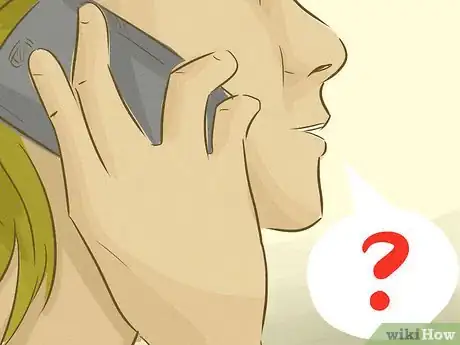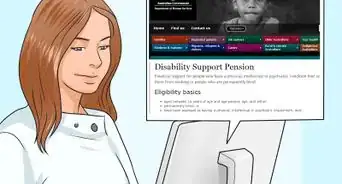This article was co-authored by Clinton M. Sandvick, JD, PhD. Clinton M. Sandvick worked as a civil litigator in California for over 7 years. He received his JD from the University of Wisconsin-Madison in 1998 and his PhD in American History from the University of Oregon in 2013.
wikiHow marks an article as reader-approved once it receives enough positive feedback. In this case, 89% of readers who voted found the article helpful, earning it our reader-approved status.
This article has been viewed 120,774 times.
Everyone sometimes needs a little extra help walking through parking lots due to age, disability, or other factors. Disabled parking permits were created for just that reason. The Texas Department of Motor Vehicles has developed a fairly simple process for determining if you are eligible for a disabled parking permit and then helping you apply for and receive one.
Steps
Determining Your Eligibility
-
1Review your eligibility. The State of Texas will issue special parking permits for people who have permanent or temporary disabilities.[1] If you have questions, consult your doctor or contact the Department of Motor Vehicles in your area. According to the Texas Department of Motor Vehicles, the following issues are considered disabilities:[2]
- Eyesight of 20/200 or less
- Paralysis
- Lung disease
- Cardiac deficiency
- Wheelchair confinement
- Arthritis
- Foot disorder
- Other mobility problems that would make a special parking permit a necessity
- Other medical condition causing the person to use a crutch, cane or other assistive device to move around.
-
2Consider the duration of your disability. The state differentiates between temporary and permanent disabilities. You should consult with your doctor regarding your condition and the length of time that you are likely to need parking assistance.Advertisement
-
3Decide what to apply for. Texas issues three different types of disabled parking permits, based on your need and the expected duration of your disability:[3]
- Red Placard - If you have a condition that limits your mobility but will only last a few months, such as a broken leg for example, you may only need a temporary red placard. This is valid for up to six months. It can be renewed, and may be transferred from one car to another in case other people may be driving you around.
- Blue Placard - If your condition is permanent or will last longer than a year or so, you may apply for the permanent blue placard. This is renewable every four years, and is transferable from one vehicle to another as needed.
- Permanent license plate. The license plate, like the blue placard, is for someone with a permanent disability. It does not need to be renewed alone, but is treated as any other car registration. The license plate stays on the car and is not transferable if you travel in different vehicles.
Applying for a Placard or Plate
-
1Obtain the application form. Texas uses a form called the Application for Persons With Disabilities Parking Placard and/or License Plate, Form #VTR-214. You can use this page, http://www.txdmv.gov/motorists/disabled-parking-placards-plates and then select the link to Form VTR-214. Alternatively, you can go to your county tax assessor-collector's office to pick up a copy of the form.
-
2Complete your portion of the form. You will need to provide the following information:
- Name, address and driver’s license number
- Telephone number and email address
- Signature
- Your car’s make, model, year and VIN, only if you are applying for permanent license plates
-
3Get your doctor’s authorization. Your doctor must complete a portion of the form. He or she must certify whether your condition is permanent or temporary.
- The doctor’s signature must be notarized, unless the doctor also provides an original prescription along with the completed form. The prescription must include the disabled person’s name, the doctor’s original signature, and a statement if the disability is temporary or permanent. [4]
-
4Prepare the fee. There is a fee of $5 for a placard for a temporary disability. There is no fee for a permanent placard or for disabled license plates.
-
5Submit the application. You may submit your completed application in one of two ways, either by mail or in person. Be sure to keep a copy of the completed form before submitting it.
- By mail – send the completed form, along with a photo ID, and check, money order or cashier’s check for the fee, if required, to your county tax assessor-collector’s office.
- In person – take the completed form, and fee, if required, in person to your county tax assessor-collector’s office.
- Find your county tax assessor-collector’s office. From the Texas DMV web site, http://www.txdmv.gov/motorists/disabled-parking-placards-plates, you will see a link on the right side of the screen to “Find Your Local Office,” and just below that another link to “Find Your County Tax Office.” Select “Find Your County Tax Office,” and a list of all Texas counties will appear. Select the one where you live to find the address and contact information for the office in your county.
-
6Call ahead. If you are planning to submit your application in person, call your county tax office ahead of time. Some may accept appointments to minimize your wait time.
Dealing with Lost, Stolen or Seized Placards
-
1Submit a copy of the application. If your placard was lost or stolen, you can get a replacement. You need to submit a copy of your original Application Form V-214 to your local tax assessor-collector’s office, and they will issue you a new placard.[5]
-
2Complete a new application. If you do not have a copy of the original form that you completed, then you will need to complete a new form and apply from the beginning.[6]
-
3Investigate a seized placard. If the police believe that your car has committed a parking offense (probably in violation of the placard rules), then your placard may be confiscated. If this happens, you need to contact the Consumer Relations Division at 888-368-4689.[7] If you do not contact them within five days, the placard will be destroyed.[8]
Warnings
- Remember, your family members are not eligible to use your parking permit without you in the car. Misuse of the placard or plate may result in fines or cancellation.⧼thumbs_response⧽
References
- ↑ http://www.txdmv.gov/motorists/disabled-parking-placards-plates
- ↑ http://www.txdmv.gov/motorists/disabled-parking-placards-plates
- ↑ http://www.txdmv.gov/motorists/disabled-parking-placards-plates
- ↑ file:///C:/Users/Ed/Downloads/VTR-214%20(2).pdf
- ↑ http://www.txdmv.gov/motorists/disabled-parking-placards-plates
- ↑ http://www.txdmv.gov/motorists/disabled-parking-placards-plates
- ↑ http://www.txdmv.gov/contact-us
- ↑ http://www.txdmv.gov/motorists/disabled-parking-placards-plates
About This Article
Before obtaining a disabled parking permit in Texas, consult your doctor about whether your disability is temporary or permanent, to decide what kind of permit to apply for. If your disability is permanent, apply for a blue placard or a permanent license plate. Alternatively, if your disability is temporary, apply for a red placard. When you’re ready to apply, fill out an Application for Persons with Disabilities Parking Placard or License Plate Form. You’ll need your doctor’s authorization to complete the application, as well as their notarized signature. Once your paperwork is ready, you can submit your application in person or by mail. To learn how to deal with a lost placard, keep reading!





